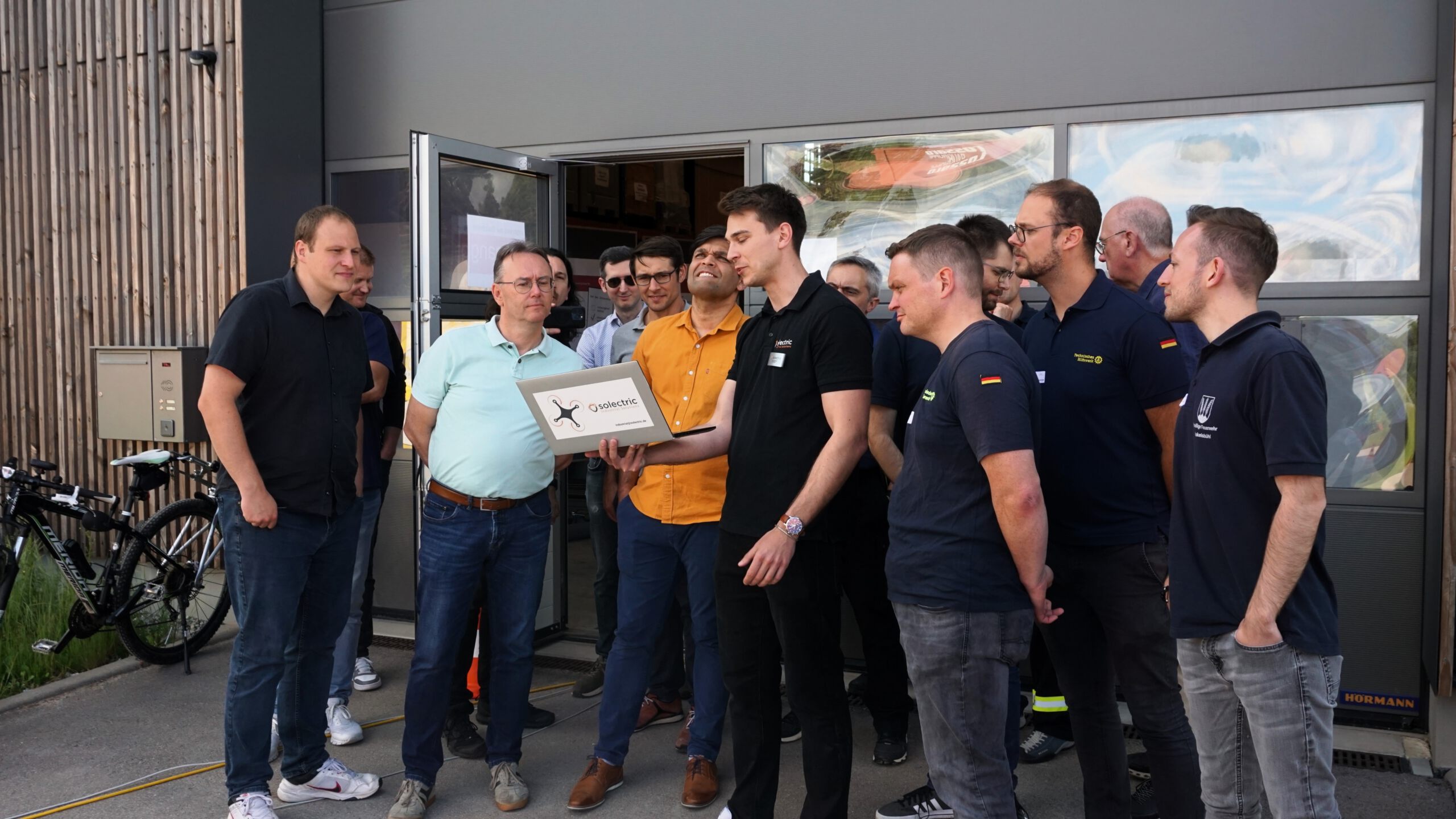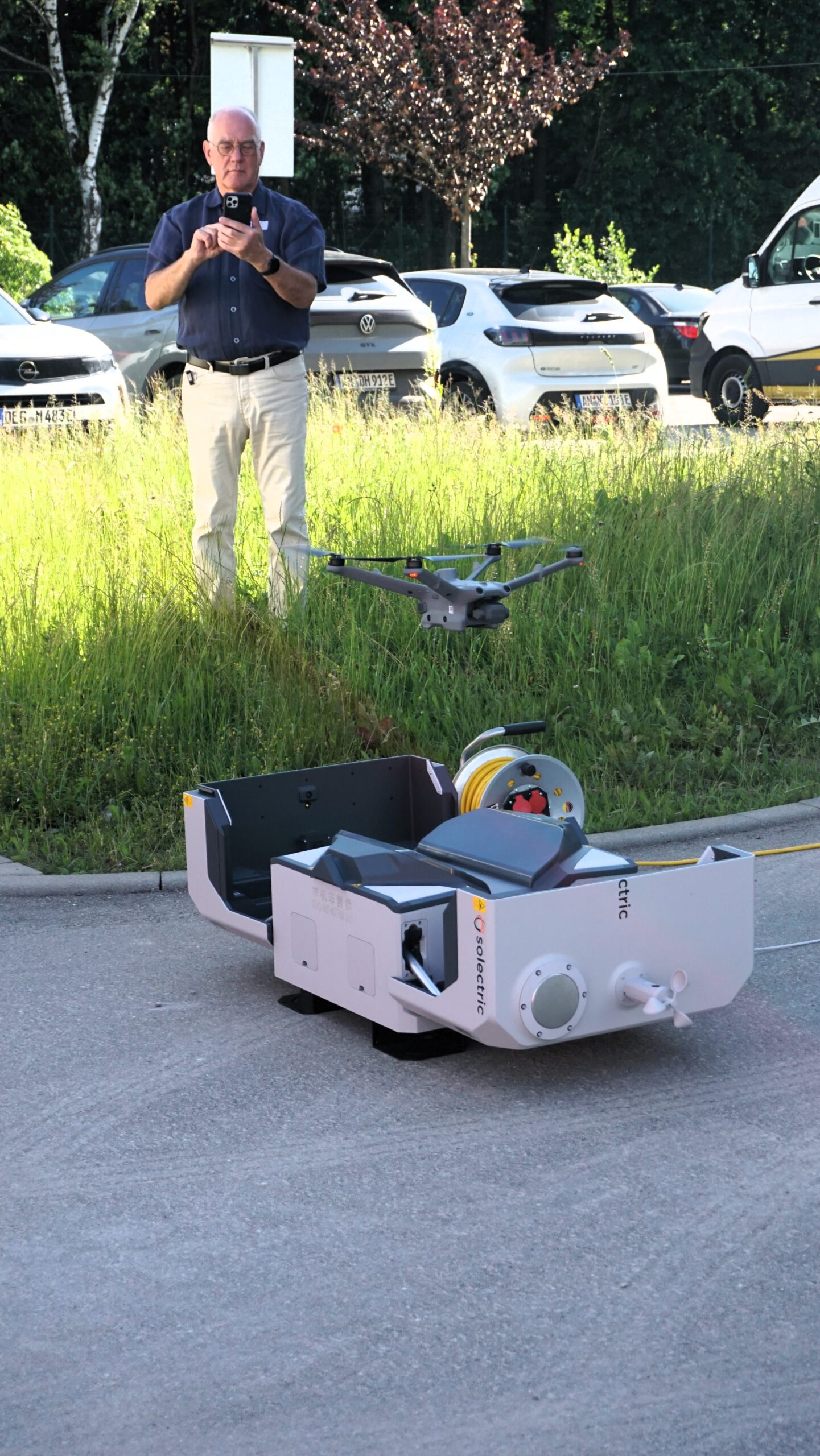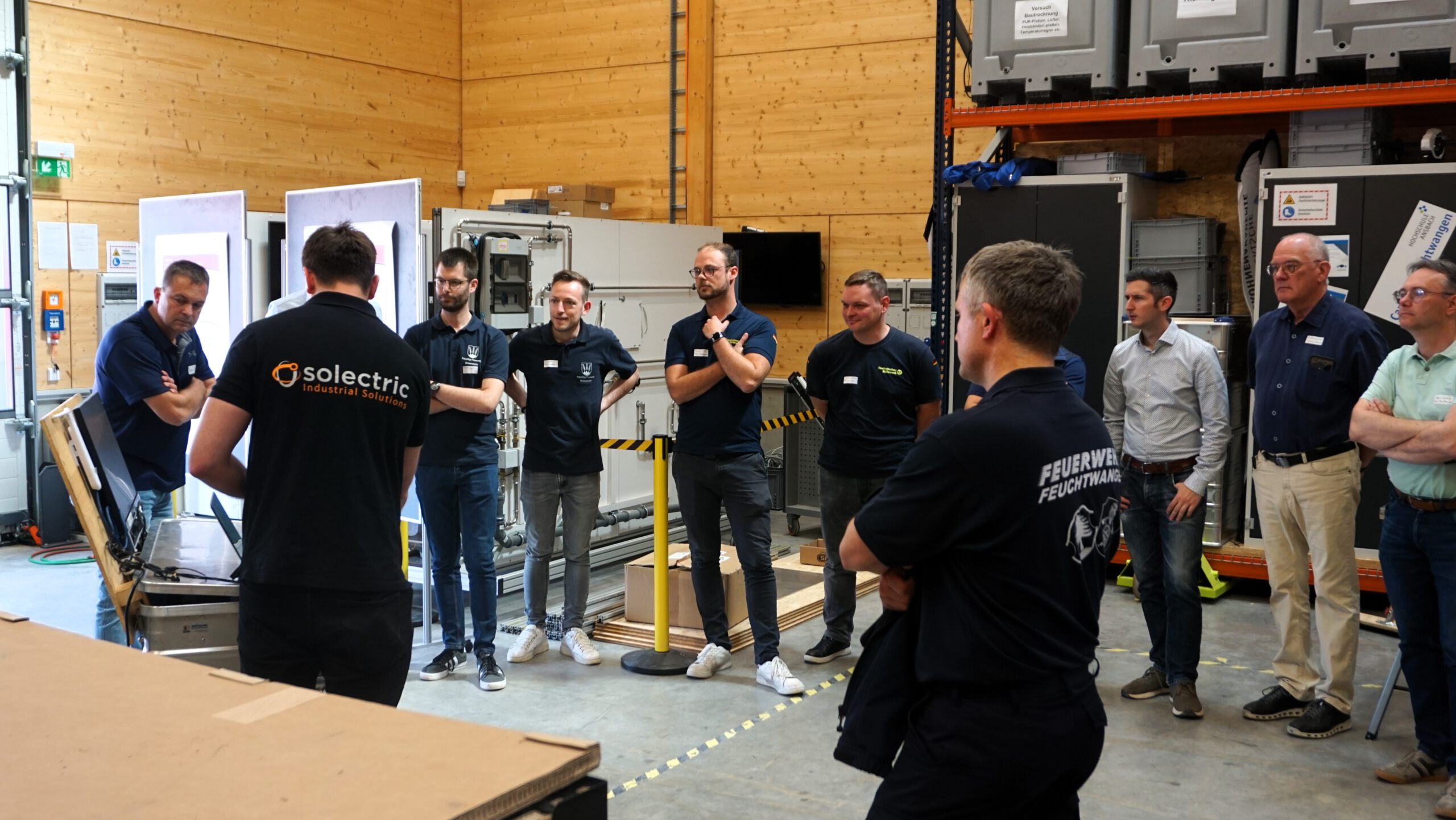‘Drone in a box’ for automated flight missions
Exciting presentation at the Feuchtwangen campus for future projects
On Tuesday, 28 May, numerous guests gathered at Ansbach University’s Feuchtwangen Energy Campus, including the third mayor of Feuchtwangen, Herbert Lindörfer, as well as representatives of the Feuchtwangen and Dinkelsbühl volunteer fire brigades and the Feuchtwangen THW. The head of the Bavarian Drone Academy, Prof Dr Helmut Roderus, and Prof Dr Stefan Geißelsöder, professor in the Artificial Intelligence and Cognitive Systems degree programme, were also present to witness the presentation of the state-of-the-art DJI Matrice 3TD and the DJI Dock 2 by the company Solectric.
After a brief welcome by Campus Coordinator Dr Gerd Hofmann, the event began with a technical presentation by Denis Benc and Kevin Dillmann. “The compact weatherproof box is the hangar for the drone. It is loaded there and takes off automatically when the roof is open. The system is specifically designed for recurring tasks such as surveying, inspection, plant management and security tasks at a fixed location. Flight missions can be planned in advance and then carried out automatically, such as the regular inspection of large ground-mounted PV systems,’ say the Solectric specialists.
The event was initiated by NeuralDrones, represented by Managing Directors Dietrich Schneider and Adrian Gegner, and also marked the start of the AHEAD-H2 project. AHEAD-H2 is a cooperation between the Feuchtwangen campus and the company NeuralDrones under the direction of Prof. Dr.-Ing. Haresh Vaidya, funded by the DATIpilot programme of the Federal Ministry of Education and Research. The aim is to develop an advanced solution for the early detection of forest fires using a sensor network combined with advanced drone technology. The aim is to detect fires at an early stage in order to optimise the deployment of rescue services and prevent major damage.
The highlight of the event was the automated drone flight: with just a few clicks, a mission with a flight route and waypoints for image recordings was created on a map. The drone then executes these independently. The flight over the neighbouring fields could be followed live via the laptop in both the visible and infrared spectrum.
There was a lively discussion after the flight: In addition to the various setting options of the software, the control system and the possible uses of the drone, the technical data of the dock, its expandability through individual programming, the integration of local network solutions through to customisation options using Raspberry Pi for your own scripts were all on the agenda.
In conclusion, both Dietrich Schneider and Prof Dr Haresh Vaidya thanked all those present for their interest and in particular Solectric for presenting the system. The participants also gave consistently positive feedback and emphasised the enormous potential of the technology to support not only rescue services but also numerous other applications such as forest fire prevention.



